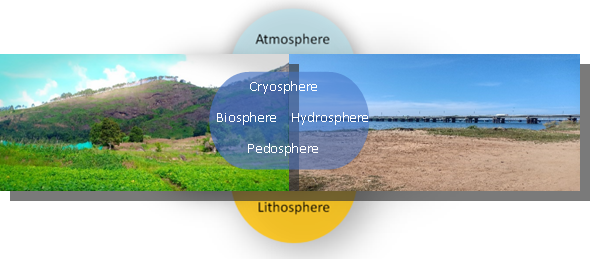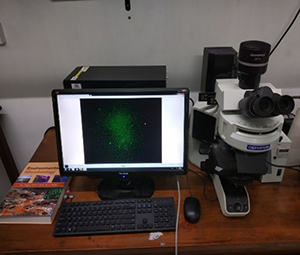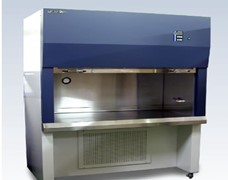
Dr. Mohammad Nuruzzama
Scientist-B, Environmental Hydrology Group (EHG)
Email : mohammad[dot]nuruzzama[at]ncess[dot]gov[dot]in
Phone(Off) : 0471- 2511646
Fax : 0471-2442280
Education:
| Ph.D. | : | 2023, Marine Science, National Centre for Polar and Ocean Research & Goa University, India. |
| Thesis | : | “Trace elements and Silicon stable isotopes in the Indian Sector of Southern Ocean and Antarctic lakes” |
| M.Sc. | : | 2016, Applied Geology, Aligarh Muslim University, India. |
| B.Sc. (Hons.) | : | : 2014, Geology, Aligarh Muslim University, India. |
Area of Specialization & Interest:
Isotope Geochemistry, Paleoclimate, Critical Zone Biogeochemistry, Antarctic lakes
- Application of traditional (Sr and Nd) and non-traditional Isotopes (δ30Si, δ34S, Δ33S, δ87Rb, δ7Li) systematics to study low temperature earth surface and subsurface processes.
- Understanding biogeochemical processes and nutrient cycling in the critical zones of varied climatic regimes.
- Paleoclimate reconstructions in tropical and Antarctic lakes sediments using trace elements and stable isotope proxies (δ13C and δ15N).
- Antarctic lake biogeochemistry
Professional Career:
| 2024 | - | Present | Scientist-B, National Centre for Earth Science Studies, Thiruvananthapuram. |
| 2024 | - | 2024 | Postdoctoral Research Fellow, University of St Andrews, Scotland, United Kingdom. |
| 2023 | - | 2024 | Project Scientist I, National Centre for Polar and Ocean Research, Goa, India. |
| 2016 | - | 2021 | Research Fellow, National Centre for Polar and Ocean Research, Goa, India. |
Honors/Awards/Fellowships/Recognitions :
- Young Scientist Award for presentation at National Conference for Polar Sciences (NCPS-2023) at NCPOR, Goa, India.
- Graduate Aptitude Test of Engineering (GATE) Geology, AIR 273 2016.
- CSIR-UGC Junior Research Fellowship (Earth Sciences), AIR 74, 2015.
Publications:
- Nuruzzama M, Rahaman W, Tripathy GR, Mohan R, Patil S. Dissolved major ions, Sr and 87Sr/86Sr of coastal lakes from Larsemann hills, East Antarctica: Solute sources and chemical weathering in a polar environment. Hydrological Processes. 2020; 34: 2351–2364. https://doi.org/10.1002/hyp.13734.
- Nuruzzama M, Rahaman W, Mohan R. Sources, distribution and biogeochemical cycling of dissolved trace elements in the coastal lakes of Larsemann Hills, East Antarctica. Science of The Total Environment. 2021; 764: 142833.
- Nuruzzama M, Ejaz T, Mohan R. Can ammonium records in Antarctic ice cores be a proxy for sea ice fluctuations? Journal of the Geological Society of India. 2022; 98(6): 760–764. https://doi.org/10.1007/s12594-022-2065-3
- Lone AM, Shah RA, Dey R, Ghadi P, Nuruzzama M, Rehman A. Report on quantitative reconstruction and numerical methods for analysis of past climate variability using diatoms. Journal of the Geological Society of India. 2018; 92(2): 251–252.
Book/ Monographs /Chapters/Edited Volumes:
- Shevnina, E., Kourzeneva, E., & Nuruzzaman, M. (2018). Water balance and thermal regime of lakes in Antarctic oases. In M. Kanao, G. Toyokuni, & M.-Y. Yamamoto (Eds.), Antarctica - A Key to Global Change. IntechOpen. https://doi.org/10.5772/intechopen.80901
Google Scholar Links:
- https://scholar.google.co.in/citations?user=rDMjqw0AAAAJ&hl=en

Dr. Rudra Mohan Pradhan
Scientist-B, Marine Science Group (MSG)
Email : rudra[dot]pradhan[at]ncess[dot]gov[dot]in
Phone(Off) : 0471- 2511717
Fax : 0471-2442280
Education:
| Ph.D. | : | 2022, Earth Sciences, Indian Institute of Technology Bombay, India. |
| M.Sc. | : | 2012, Geology, Indian Institute of Technology Kharagpur, India. |
| B.Sc. | : | : 2010, Geology, North Orissa University Baripada, Odisha, India. |
Area of Specialization & Interest:
- Fault Zone Hydrogeology, Earth Surface Processes, Critical Zone Studies,Near-Surface Geophysics, Stable Isotopes
Professional Career:
| 2024 | - | Present | Scientist-B, National Centre for Earth Science Studies, Thiruvananthapuram. |
| 2022 | - | 2024 | National Postdoctoral Fellow, Indian Institute of Technology Kharagpur, India. |
| 2022 | - | 2022 | Research Associate, Indian Institute of Technology Bombay, India. |
| 2019 | - | 2022 | Senior Research Fellow, Indian Institute of Technology Bombay, India. |
| 2019 | - | 2019 | Visiting Research Fellow, University of Nebraska-Lincoln, NE, USA. |
| 2016 | - | 2018 | Junior Research Fellow, Indian Institute of Technology Bombay, India. |
| 2013 | - | 2014 | Junior Research Fellow, Indian Institute of Technology Roorkee, India. |
Honors/Awards/Fellowships/Recognitions :
- International Travel Support (ITS), ANRF, Govt. of India (₹120000) (2024).
- 52ndWorld Groundwater Congress IAH 2024 Travel Support, Davos, Switzerland ($750) (2024).
- International Association of Hydrogeologists (IAH) Grant, UK (€450) (2024).
- INC-IAH Travel Bursary, IAH Indian National Chapter, Faridabad (₹10000) (2024).
- Best Presentation Award, INC-IAH-CSMU Groundwater Conference, Navi Mumbai (2024).
- INC-IAH Best Paper Award, IAH Indian National Chapter, Faridabad (2023).
- National Postdoctoral Fellowship, SERB-DST, Govt. of India (₹2600000) (2022).
- Research Associateship, IIT Bombay (₹84000) (2022).
- Geochemical Society Grant (Goldschmidt 2022) Hawai’i, USA ($2500) (2022).
- AGU Fall Meeting Grant (Near-Surface Geophysics), USA ($1000) (2021).
- GEOHOST Support (35th IGC 2020, India) ($375) (2020).
- International Travel Grant by Indian Institute of Technology, Bombay (₹140000) (2019).
- GSA International Travel Grant (Geological Society of America, USA), ($700) (2019).
- IAHS-SYSTA Grant, IAHS, UK ($2700) (2019).
- WARI Fellowship, Indo-US Science and Technology Forum and DST ($15,200) (2019).
- International Financial Grant, State Key Laboratory, Shanghai, China ($1000) (2018).
- International Travel Support (ITS), SERB-DST, Govt. of India (₹86275)(2018).
- Institute Inspire Scholarship by Indian Institute of Technology, Kharagpur (₹24000) (2010).
- IIT Joint Admission Test to M.Sc. (JAM) Qualified.
- Senior Merit Scholarship by North Orissa University, Odisha (₹1300) (2009).
- National Merit Scholarship by CHSE, Govt. of Odisha (2007).
Membership in Professional Bodies:
- Member: International Association for Hydrogeologists (IAH), UK
- Life Member: International Association for Hydrological Sciences (IAHS), UK
- Member: Geochemical Society, USA
- Member: American Geophysical Union (AGU), USA
- Life Member: Nordic Association for Hydrology (NAH), Sweden
- Member: Geological Society of India, Bangalore
Google Scholar Links:
- https://scholar.google.com/citations?user=TSKWpcgAAAAJ
ORCID:
- 0000-0002-9977-9223
Vidwanid:
- 584053
Other Professional Activities (Professional Training/Committees/Editorial Services):
Training/Workshops
- Training Course on “Advanced Instrumentation for Earth and Environmental Sciences” (DST-STUTI, NGRI Hyderabad and NIT Warangal) (June 2023).
- Short course on “Environmental Isotope tracers in Hydrogeological Applications” (University of Milano and GTK Finland) (Oct 2020).
- Short course on “Contaminant Hydrogeology with a Focus on Asia" at Daejeon, Korea (Instructor: Prof. Franklin D Schwartz, Ohio University, USA) (2018).
- Training on (1) Well Hydraulics and Pumping Test Data Analysis, (2) Application of Geophysical Techniques in Groundwater, (3) Aquifer Mapping: Concept and approaches (CGWB-RGNGWTRI, Raipur) (July-Nov 2016).
- Training on Isotope Hydrology and groundwater resources (NIH Roorkee) (Feb 2016).
- Training on Advanced Hydrological Modeling (NIH Kakinada) (Feb 2014).
- Workshop on Hydrogeological and Aquifer characterization tests (Anna University) (Nov 2013).
Journal Reviewer
- Scientific Reports (Nature)
- Water Resources Management
- Journal of Earth System Science
- National Academy Science Letters
- Stochastic Environmental Research and Risk Assessment
- Geoscience Frontiers
- CLEAN - Soil, Air, Water
- RSC Advances
- Environmental Earth Sciences
- Frontiers in Environmental Science
- Natural Resources Research
- Water
- Remote Sensing
- Land
- Sustainability
- Sustainable Water Resources Management
- Hydrology
- Environmental Monitoring and Assessment
- Applied Water Science
- Earth Systems and Environment
- Discover Geoscience
- Environmental Geochemistry and Health
- Managing Editor: Journal of Geointerface (ISSN:2583-6900) (February 2022 onwards-)
- Managing Executive and Board of Management: CEHESH TRUST OF INDIA (2022-)
- Member Environment: ROSHNI Foundation (2015-)

Dr. Rudra Mohan Pradhan
Scientist-B, Marine Science Group (MSG)
Email : rudra[dot]pradhan[at]ncess[dot]gov[dot]in
Phone(Off) : 0471- 2511717
Fax : 0471-2442280
Projects (External Funded) Completed as PI:
- Technical Report on Electrical Resistivity Tomography (ERT) Study for delineating suitable sites for constructing earthing pits at Arjan Singh Air Force Station, Panagarh, West Bengal (2024). Funding agency: Indian Air Force, Ministry of Defence, Govt. of India. Role: Data acquisition and interpretation (Status: Completed).
- Quantification of Submarine Groundwater Discharge (SGD) and its quality flux (Trace elements and Nutrients) along the Odisha Coast, India: an integrated Time-lapse ERT and Environmental isotopic approach. Funding agency: SERB-DST, Govt. of India. Role: PI (Total Award: ₹2600000; 12/2022-11/2024; Status: Closed).
- Uranium contamination status in Precambrian basement aquifers of Ambaji Basin (Aravalli terrane), India: insight from structural and geochemical constraints. Funding agency: Daugherty Water for Food Global Institute at the University of Nebraska-Lincoln, USA. Role: PI (Total Award: $2000; 06/2019-09/2019; Status: Completed).

Dr. Rudra Mohan Pradhan
Scientist-B, Marine Science Group (MSG)
Email : rudra[dot]pradhan[at]ncess[dot]gov[dot]in
Phone(Off) : 0471- 2511717
Fax : 0471-2442280
SCI Publications:
- Goswami, A., Sarangi, S., Mohanty, S.P., Patil, D.J., Sarkar, A., Ray, J.S., Das, S., Mohanty, D., Ahmad, S.M., Pradhan, R.M. and Barik, A. (2023). Negative δ13Ccarb excursions within early part of the Lomagundi event recorded in the Paleoproterozoic sedimentary carbonates, Aravalli Supergroup, Rajasthan India: chemostratigraphy and basin evolution. Precambrian Research 399, 107240.http://doi.org/10.1016/j.precamres.2023.107240.
- Pradhan, R.M.*, Singh, A., Ojha, A.K. and Biswal, T.K. (2022). Structural controls on bedrock weathering in crystalline basement terranes and its implications on groundwater resources. Scientific Reports (Nature) 12, 1-22. http://doi.org/10.1038/s41598-022-15889-x.
- Biswal, T.K., Pradhan, R.M., Sharma, N.K., Tiwari, S.K., Beniest, A., Behera, B.M., Singh, S., Saraswati, R., Bhardwaj, A., Umasankar, B.H. and Singh, Y.K. (2022). A review on deformation structures of different terranes in the Precambrian Aravalli-Delhi Mobile Belt (ADMB), NW India: Tectonic implications and global correlation. Earth-Science Reviews 230, 104037. http://doi.org/10.1016/j.earscirev.2022.104037.
- Behera, A.K.*, Pradhan, R.M., Kumar, S., Chakrapani, G.J. and Kumar, P. (2022). Assessment of Groundwater Flow Dynamics Using MODFLOW in Shallow Aquifer System of Mahanadi Delta (East Coast), India. Water 14(4), 611. http://doi.org/10.3390/w14040611.
- Pradhan, R.M.*, Behera, A.K., Kumar, S., Kumar, P. and Biswal, T.K. (2022). Recharge and geochemical evolution of groundwater in fractured basement aquifers (NW India): Insights from environmental isotopes (δ18O, δ2H, and 3H) and hydrogeochemical studies. Water 14(3), 315. http://doi.org/10.3390/w14030315.
- Pradhan, R.M.*, Balamurugan, G., Pradhan, B. and Biswal, T.K. (2021). Integrated multi-criteria analysis for groundwater potential mapping in Precambrian hard rock terranes (North Gujarat), India.Hydrological Sciences Journal 66 (6), 961-978.http://doi.org/10.1080/02626667.2021.1906427.
- Pati, P.*, Pradhan, R.M., Dash, C., Parkash, B. and Awasthi, A.K. (2015). Terminal fans and Ganga plain tectonism: A study of neotectonism and segmentation episodes of the Indo-Gangetic foreland basin, India.Earth-Science Reviews 148, 134-149.http://doi.org/10.1016/j.earscirev.2015.06.002.
Book/ Monographs /Chapters/Edited Volumes:
- • Roul, A.R.*, Behera, A.K., Pradhan, R.M. and Pradhan, S.P. (2024). Navigating Hydrological Factors in Understanding and Mitigating Landslide Hazards in the Indian Himalayas. Springer Publ. (in Press).
- • Behera, A.K.*, Pradhan, R.M., Roul, A.R. and Kumar, P. (2024). Groundwater and Its Impact on Landslides Along Himalayan Regions: A Review. In: Meraj, G. et al. (eds) Navigating Natural Hazards in Mountainous Topographies. Disaster Risk Reduction. Springer, Cham, 13-25. https://doi.org/10.1007/978-3-031-65862-4_2.
- • Behera, A.K.*, Pradhan, R.M., Pradhan, B. and Kumar, P. (2024). Hydrogeochemical characterization of groundwater in Ambagarh regions: Mining rich state Chhattisgarh, India. Springer Publ. In: Marrugo-Negrete et al. (eds.), Mining Impacts and their Environmental Problems, (Springer Cham. and Capital Publ.), 163-174.
- • Pradhan, R.M.*, Deshmukh, R., Chandrasekhar, E., Balamurugan, G. andBiswal, T.K. (2019). Geoelectrical studies for groundwater exploration in fractured rock terrane (Ambaji basin, India). In: New Prospects in Environmental Geosciences and Hydrogeosciences (Springer), 511-514. http://doi.org/10.1007/978-3-030-72543-3_115.
- • Pradhan, R.M.* and Biswal, T.K. (2018). Fluoride in groundwater: a case study in Precambrian terranes of Ambaji region, North Gujarat, India. PIAHS (Copernicus Publ.), 379, 351-356, http://doi.org/10.5194/piahs-379-351-2018.
Conferences/Seminars/Symposia:
- Pradhan, R.M.*, Biswal, T.K.and Sharna, S.P. (2024). Understanding the complex granitic rock aquifers through lense of structural and geoelectrical studies: weathered-bedrock architecture and groundwater perspectives. 52nd World Groundwater Congress IAH 2024, Davos, Switzerland [ORAL].
- Pradhan, R.M.*and Biswal, T.K. (2022). Elevated uranium in shallow fractured granitic aquifers, NW India: a structural and geochemical perspective. Goldschmidt 2022, Honolulu, Hawaiʻi, USA [POSTER].
- Pradhan, R.M.*and Biswal, T.K. (2019). Elevated uranium concentration in groundwater of Aravalli region, Gujarat, India: a structural and geochemical study. 27th IUGG General Assembly, Montreal, Canada, July 8-18 [ORAL].
- Pradhan, R.M.*, Weber, K.A., Snow, D.D. and Biswal, T.K. (2019). Spatio-temporal distributions of uranium concentration in shallow aquifers of Aravalli terrane (North Gujarat), India. GSA Annual Meetings, Arizona, USA, Sept 22-25 [POSTER].
- Pradhan, R.M.* and Biswal, T.K. (2019). Structural and geophysical study for mapping deep-seated aquifers in Aravalli terrane, India. AGU Chapman Conference, Oct 21-24, Valencia, Spain [POSTER].
- Pradhan, R.M.* and Biswal, T.K. (2018). Occurrence of uranium in groundwater in crystalline basement aquifers of Ambaji region, North Gujarat, India. 45th IAH Congress, Daejeon, South Korea, Sept 9-14 [POSTER].
- Pradhan, R.M.* and Biswal, T.K. (2018). Sustainability of groundwater resources in Precambrian basement aquifers of Aravalli terrane, North Gujarat, India-a structural approach. 9th International Conference on Asian Marine Geology (ICAMG-9), Shanghai, China, Oct 10-12 [POSTER].

Marine and Microbiology Laboratory


This lab is equipped to carryout isolation, identification, quantitative and qualitative determination of bacteria in water and sediment. Data quality is assured by sending pure cultures to recognized labs. The database is used by environmental stewards for decision making in pollution control and to verify the effectiveness of management action initiated in terms of pollution abatement. This lab is engaged in estimation of primary productivity, chlorophyll a and phaeophyte and in identification and qualitative and quantitative estimation of phytoplankton, zoo plankton and benthic organisms. This facility is equipped with Laminar Air Flow chamber, Vertical Air Flow Type, Laminar Air Flow cabinet by Lab line, Light Microscope-Labomed Lx300, Microscope - Olympus (CX 41), Microscope - Olympus (BX 43), Microscope - Radical (RXLr 5), Vertical Autoclave - Lab line and an Incubator - Rotek. This facility has capabilities of Identification of major pathogenic microbes from water/liquid systems, storage of reference cultures, estimation of primary productivity and can carry out microbiological evaluation of industrial and domestic waste waters on payment basis. The lab houses RT-PCR, Gel Documentation System and Electrophoresis for microbial studies in advanced level.




 RTI Act
RTI Act
